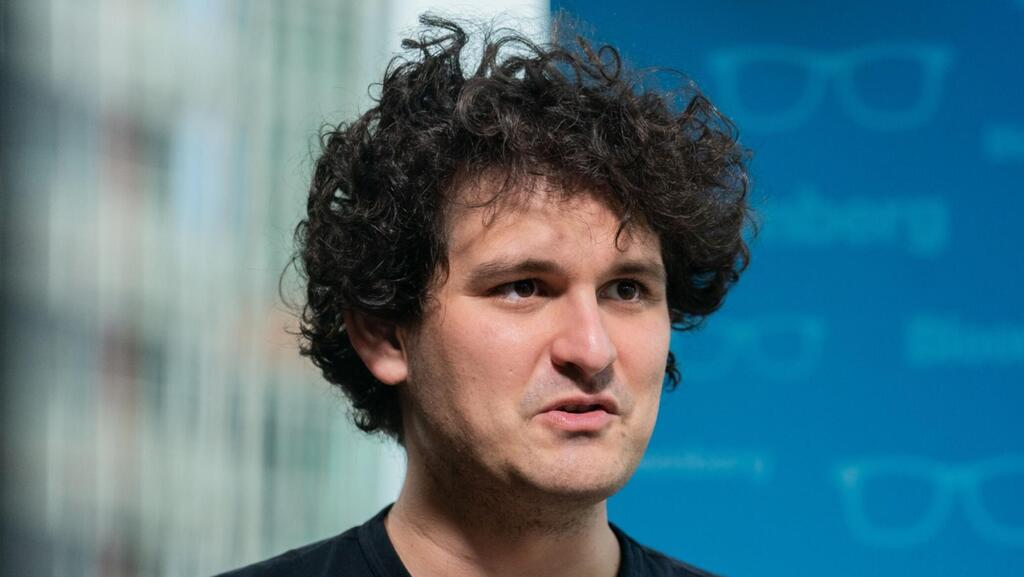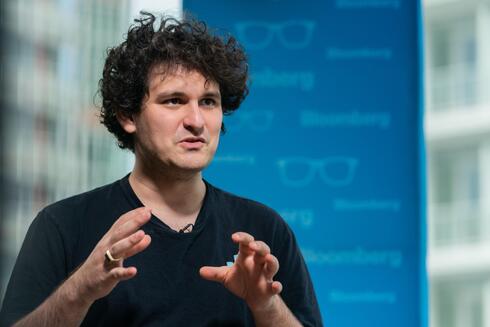
How did some of the world’s largest VCs miss all the warning signs and invest in FTX
The promise of easy and fast money attracted the likes of SoftBank, Sequoia, and Tiger Global to FTX and SBF, but they are all now paying the price for investing huge amounts in risky companies that engaged in scandalous leveraged trading
As part of its bankruptcy proceedings, the crypto exchange FTX, with its 134 affiliated companies, revealed on Wednesday that it has over one million creditors, to whom it owes an amount it estimates to be over $50 billion. These are jaw-dropping numbers. But the empire that Sam Bankman-Fried established in four short years would not have been so large had its expansion not been fueled continuously and aggressively by many old venture capital funds, who wanted a share of the easy and fast money that the crypto market keeps promising to create out of thin air.
They did this not only with Bankman-Fried's business, but with a series of crypto companies - some of which have already collapsed like dominoes - that deal in high-risk trading and lending and scandalous leverage, most of them unsupervised and also being unhealthily linked to each other. Thus these "sophisticated" investors used "cheap" money to give too long a life to very risky crypto companies, helped them to swell to astronomical proportions and contributed to the loss of billions of dollars to hundreds of thousands of customers worldwide.
Here are some examples of the tangle of connections that caused the collapse in the crypto market.
SoftBank
Companies involved: FTX • Genesis (through DCG)
In November 2021, Alphabet's investment fund and SoftBank's Vision 2 fund led a huge fundraising round for Digital Currency Group (or DCG). This was the first significant fundraising by the holding company controlled by Barry Silbert and it amounted to $700 million, according to a value of $10 billion for DCG, which is a particularly prominent investor in the field. Its dominant and most famous holdings are: industry website CoinDesk, Grayscale, which is behind the bitcoin trust GBTC, and the institutional lending and trading company Genesis Trading.
Genesis is the largest creditor of the Singaporean crypto hedge fund Three Arrows Capital - 3AC which capitulated last May. Its two founders moved to the United Arab Emirates, which has no extradition agreements with the U.S. or Singapore. Genesis gave 3AC a loan worth $2.36 billion, but it didn’t collapse like most other crypto companies would at the face of such a loss, as happened to 3AC's second largest creditor Voyager Digital. In July, Genesis announced that it experienced deep losses due to the collapse of 3AC (see more details below). and another company called Babel Finance but survived because DCG injected capital into it.
SoftBank indirectly financed the rescue of Genesis from the collapses in May and extended its life long enough for it to absorb another loss. With the fall of Sam Bankman-Fried's crypto empire last week, $175 million that Genesis deposited in FTX was also lost. Here again, DCG injected capital to prevent the collapse of its subsidiary, this time in the amount of $140 million. But that didn't help either and yesterday the company announced it was freezing its activity. As a result, the trading platform headed by the Winklevoss brothers, Gemini, also began to experience difficulties.
Unfortunately for all concerned, SoftBank's part did not end here. After the massive investment round in DCG, it entered into an investment in Bankman-Fried's companies in July 2021 when FTX raised $400 million at a value of $18 billion. It was just a promo for the company's third fundraising round last January when SoftBank invested $100 million in FTX at a value of $32 billion. SoftBank announced in recent days that it has marked down these investments to zero.
Regarding 3AC, which was the largest crypto hedge fund of all, and at its peak was worth $10 billion, its downfall began when the first crypto project in the current wave collapsed - the Terra Luna project in May. 3AC immediately lost $200 million, but its troubles were not over. 3AC was one of the largest holders of a product called GBTC that allowed institutional players exposure to Bitcoin. This means that 3AC received a massive $2.36 billion loan from Genesis Global, and with this capital turned to its sister company Grayscale to purchase massive amounts of GBTC. A fall in the price of the product produced catastrophic losses for 3AC and accelerated its death.
Sequoia Capital
Companies involved: FTX • Babel Finance
FTX's second fundraising round in July 2021 featured a particularly large and veteran investor: Sequoia, which invested $214 million in the company. Of course, it also recently announced that it had written off its investment. Sequoia especially benefited from the relationship with Bankman-Fried, who through the investment fund he founded FTX Ventures and the hedge fund Alameda Research, invested hundreds of millions of dollars back into Sequoia (the exact amount is still unknown).
Where did these hundreds of millions of dollars come from is the big question. Where did Bankman-Fried's companies get the money, was this from massive funding rounds, or if we rely on revelations by the Wall Street Journal and Reuters, did Bankman-Fried use to transfer client funds between his various companies through a "back door", in what is now being investigated by regulators around the world and is allegedly an illegal use of customer funds.
Sequoia Capital cannot say that it did not understand the danger of investing in a trading platform, lending or investing in the crypto market. This fund is also one of the investors in Babel Finance, a Hong Kong lending platform that raised $40 million in May 2021 at a valuation of $2 billion. Just a year later, long before FTX collapsed, Babel Finance lost $280 million after gambling with customer funds. These days this company is on the verge of bankruptcy. Sound familiar? It is indeed similar. Speaking of Babel Finance, its insolvency led the company that provided it with a line of credit - Maple Finance to its own debt crisis. The Maple Finance trading platform exists, among other things, thanks to the generous funding of FTX. Where does FTX get funds to invest in Maple Finance? As mentioned, this is the great mystery of FTX, perhaps the money came from the investments of Sequoia, SoftBank or perhaps it was customer funds. Time will tell.
Sequoia Capital was not the only one to benefit from the back and revolving doors of money. According to The Information, Bankman-Fried injected $20 million into VC fund Paradigm, headed by Fred Ehrsam (co-founder of Coinbase), last year. This is after Paradigm itself invested $278 million in FTX. According to estimates, Paradigm is one of the three largest shareholders in FTX, not that this gave it a place on the company's board of directors. In fact, there wasn't actually a board of directors at the company. Paradigm also invested in BlockFi, another company that is currently on the brink of insolvency.
Tiger Global
Companies involved: FTX • Babel Finance • BlockFi
Sequoia did not make the investment in Babel Finance alone, alongside it was Tiger Global. Tiger Global not only participated in each of FTX's three fundraising rounds starting in 2019, but in between invested in Babel Finance and also took a dominant part in investing in the BlockFi lending platform.
The American company BlockFi grants high interest rates on deposits and low interest rates on loans, sustaining that gap apparently thanks to loans to major players. This model is very similar to the bankrupt Israeli-American company Celsius, and parts of it violate American securities laws, which is why BlockFi paid a $100 million fine to the Securities and Exchange Commission in February of this year.
One of the major players that received a loan from BlockFi was 3AC, reaching an aggregate amount of $80 million. A loan that brought BlockFi to the brink of insolvency. Fortunately for it, or ultimately not, Bankman-Fried arrived and through Alameda (who, as mentioned, apparently brings to the table investors' and customers' money with it) entered into an agreement with BlockFi. It agreed to provide the company with a line of credit that ultimately amounted to approximately $680 million in order to overcome the liquidity crisis it was stuck in, and in return it would transfer part of its financial activity to the trading arenas of FTX. The deal allowed Bankman-Fried to purchase BlockFi in the future for about $250 million, a dramatic drop from the estimated value of $3 billion that the company achieved in its fourth fundraising in March 2021, when it raised $350 million led by Tiger Global.
Bankman-Fried at the same time did a similar thing for a publicly traded Canadian company — Voyager Digital — 3AC's second largest creditor, with a debt of $686 million in which Bankman-Fried himself was a major shareholder. This meant that FTX directed more assets and liquidity to its various platforms. The other meaning was that it created a problematic dependence on a series of bankrupt businesses. Since FTX stopped all activity and declared bankruptcy, BlockFi's business immediately collapsed, which as of the writing of this article has frozen its activity, along with all the assets of its hundreds of thousands of customers worth hundreds of millions of dollars.
Related articles:
A circle of investments, temptations, losses and cover-ups
Hundreds of thousands of customers around the world fell prey to trading and lending companies in the crypto market that made exaggerated promises such as double-digit returns and that their money was "protected forever". But their unnaturally long life was made possible thanks to the aggressive involvement of venture capital funds.
FTX, Celsius, BlockFi and others pointed to the names "Sequoia", "Tiger Global" or "Ontario Teachers' Pension Fund" and used them as evidence of their integrity. The money was leveraged to lure small customers and allowed them to invest in each other, lose one from the other, and cover up for each other. And the funds? Some of them realized record profits.
Each and every one of the funds that invested capital in Sam Bankman-Fried's companies was, without noticing, a part of the Celsius fiasco. The money that flowed into FTX and Alameda allowed these companies to continue their risky investment strategy, with Celsius being one of the more dominant ones.
Today we know that Alameda itself is one of Celsius' biggest backers with a $12 million investment in a platform it will likely never see. Another company called Pharos USD is Celsius' biggest creditor — $81 million in debt. Although no direct connection between Pharos USD and FTX's companies is evident, a Bloomberg investigation found close connections between Alameda and Bankman-Fried himself and this company, which is difficult to currently understand.
Estimates are that the collapse of Celsius last May, along with the fall of 3AC, was a destabilizing factor in Alameda itself, and led Bankman-Fried to pour $4 billion in customer funds into it at that time.
One way or another, there is no way to ignore or whitewash the role VCs played in this debacle.

